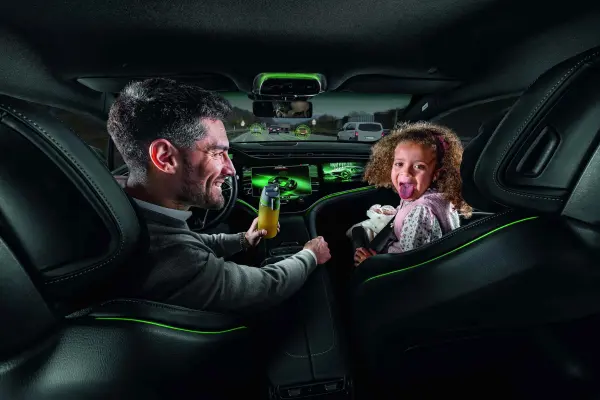

Actively Leveraging the Potential of Automated Driving
Following a period of historically low traffic fatalities in 2020 – largely thanks to the pandemic – many countries have seen their numbers increase again.
In 2020, 18,800 people in the European Union (EU) died in road crashes, while in 2021 it was 19,900, and in 2022 around 22,600, which brings the figure more or less back to where it was in 2019. There is no doubt that the long-term trend is a positive one, but there is still a lot that must be done if we are to achieve our ambitious targets of halving the number of traffic fatalities in the EU by 2030 and eliminating them altogether by 2050, if possible. In the context of “Vision Zero,” a strategy that is gaining traction internationally, it is now more important than ever that everyone use all available opportunities in the best way possible to further improve road safety.
Given that 90 percent of accidents are caused by human error, leveraging the potential of technology and, in particular, the systems used in connected and automated driving will be key. Equipping vehicles with relevant assistance systems and designing them to communicate with one another and the road infrastructure will help detect and avoid dangerous situations early on and prevent accidents – or at least mitigate their consequences. Assistance systems, however, do not relieve drivers of their responsibility. Ultimately, it is always the human behind the wheel who has responsibility for the vehicle.
Given that 90 percent of accidents are caused by human error.
The extent to which humans and technology are interwoven in road traffic has once again been put under the microscope in this year’s DEKRA Road Safety Report. Just as a reminder: in 2012, we dedicated an entire report to this complex topic. For example, no matter how useful the technology may be, it must never be allowed to distract, or even overwhelm, the driver. As a fundamental rule, assistance systems must be easy for everyone to use. Using them must not create additional risks or hazards that undermine the success achieved through implementation of road safety measures. The fact that this is a very real risk has been shown in both a forsa survey commissioned by DEKRA and a human subject research study conducted by DEKRA, the results of which will be presented in detail in this report.
Another important aspect to ensure is that any systems installed for assisted and automated driving, as well as the safety-relevant mechanical components, function reliably for the entire service life of the vehicle. Only then will they be able to achieve their desired effect. Periodical technical inspections (PTI), which many countries around the world have been conducting for many years now, will therefore become even more important in future than they already are today – given the higher complexity of vehicle systems and the risk of electronic manipulation.
The DEKRA Road Safety Report 2023 shines a light on several problem areas in terms of the human-machine interface from the perspective of accident research, traffic psychology, vehicle technology, infrastructure design, and legislation. I am particularly pleased that renowned national and international experts have once again agreed to provide statements, in which they report on their respective experiences and any measures taken. These statements complement our own expertise and further underscore how relevant our report is in specialist circles. I hope you find this report a stimulating read.
Accidents, the human factor, technology and infrastructure – plus numerous accident examples and statements by experts from all over the world: The 2023 DEKRA Road Safety Report examines the topic of "technology and people" from different perspectives.
Download now